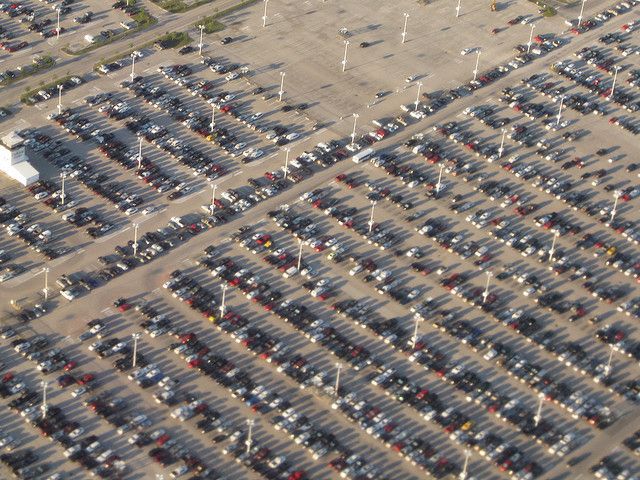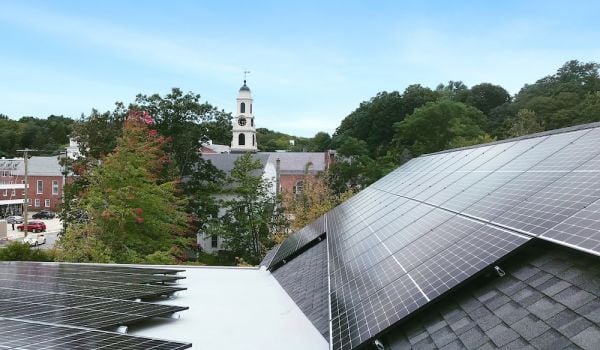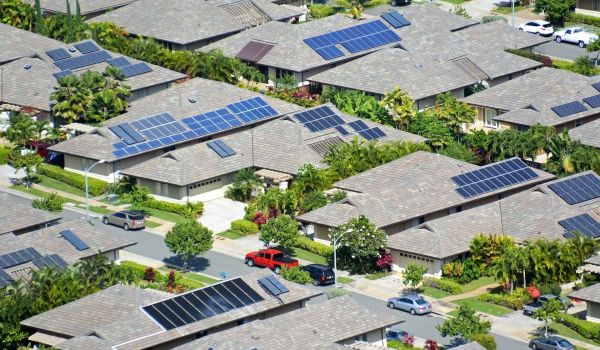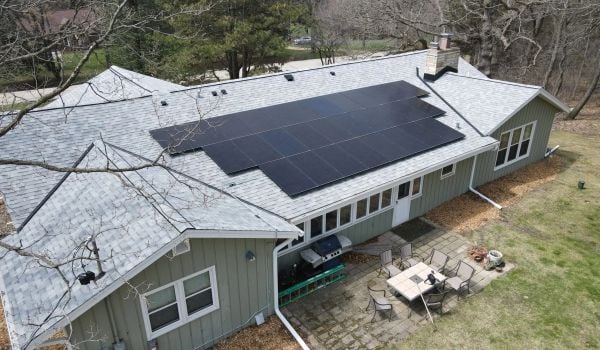As public institutions around the country consider privatizing certain assets in an effort to save money, the discussion has occasionally moved to environments where, for better or worse, Americans spend an inordinate amount of time: Parking lots.
Ohio State University, for instance, plans on leasing its parking to outside operators — a policy that has drawn criticism for potentially allowing a private company to benefit at the expense of drivers. But if improving the parking situation is one of the goals of handing over control of the lots, why not take this opportunity to rethink not only who runs public parking, but how. As universities and cities hand over the keys to their asphalt kingdom, why not negotiate higher—and greener—standards for the privatized lots?
Think about it: When was the last time you actually noticed a parking lot? MIT Professor of Urban Planning Eran Ben-Joseph recently pointed out an eye-opening if not-too-shocking fact: Parking lots in the United States could cover the entire island of Puerto Rico. For an island’s worth of parking lots, few (if any) seem to stand out from the crowd.
Bland landscaping with the occasional gazebo or roundabout is the norm, assuming one isn’t buried deep inside a parking garage. To make matters worse, two in three public parking spots at any given time are vacant.
Parking lots offer businesses their first chance to make an impact on visitors, set the mood for an impending purchase, or make a client feel at ease. City planners could take publically owned lots and turn wastelands of asphalt into destinations exuding the character and themes of each respective city. “Designed with conscious intent, parking lots could actually become significant public spaces, contributing as much to their communities as great boulevards, parks, or plazas,” writes Ben-Joseph.
Yet a cursory Google search of “interesting parking lots” returned an odd Swiss parking garage and a wall of whales. Needless to say, the pickings were slim.
Ideas to improve parking lots do exist, however, as many environmentalists and urban planners support adding green spaces to address excessive heat and drainage problems. A decade-old study published in the Journal of Arboriculture concluded that “even sparse tree canopy exerted a cooling effect on both parking lot climate and vehicle temperature.” Trees and other plant life can not only improve the environment but serve as a much needed scenery upgrade.
The 2008 EPA-published Green Parking Lot Resource Guide).PDF called for a number of changes to parking lots, but the literature merely serves as suggestions and few are making an impact to date. Take the suggestion to include vegetated water channels instead of pipes to capture and redirect storm water.
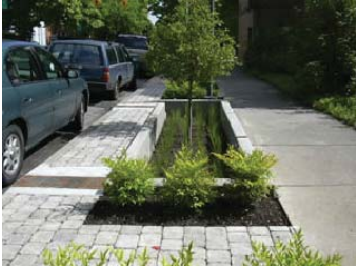
Rain garden in a Portland parking lot. Credit: EPA
“Many cities and towns have begun to establish storm water and flood control regulations,” says Ben-Joseph. “Unfortunately, methods used to adhere to these regulations often utilize engineered infrastructure [such as pipes] that are aimed at quickly removing rainfall from the lot.” These fixes address drainage concerns but leave excessive heat and aesthetics for another day.
Parking lots also provide a source of alternative energy. Always one for innovation, Google installed solar panels throughout parking lots at company headquarters five years ago. The Federal Highway Administration recently awarded Solar Roadways $750,000 to design solar-powered parking lots with the aim to melt snow and ice. These isolated examples of environmental awareness desperately need an assist from zoning ordinances, where including a mandate for solar panels in commercial buildings could ensure a steady increase in renewable energy.
When discussing the topic with UCLA Professor of Urban Planning Don Shoup, he acknowledged “[to have seen] a lot of solar installations in parking lots recently, but not any cities that require solar power from parking lots.”
Both green spaces and solar panels offer environmental benefits but are failing to gain significant momentum. The former also improves aesthetics, while the latter can be integrated as part of a broader facelift to help break up the monotony of today’s asphalt jungles.
Outrageous parking garage designs are already spreading across the world, but the parking lot — one of America’s old standbys in the automobile age — plods along in its unrelenting quest to simultaneously aggravate and bore all who cross its path. In a world of constant change and innovation, the parking lot needs to catch up.
Matt is a freelance writer and historian. Check out his published writing and musings at www.mattmilloway.com.

